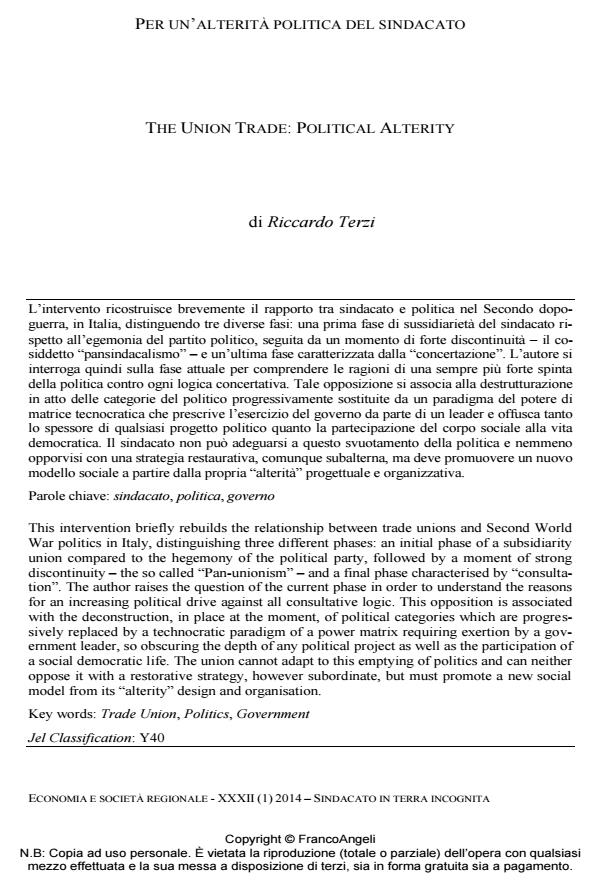The union trade: political alterity
Journal title ECONOMIA E SOCIETÀ REGIONALE
Author/s Riccardo Terzi
Publishing Year 2014 Issue 2014/1
Language Italian Pages 8 P. 50-57 File size 626 KB
DOI 10.3280/ES2014-001005
DOI is like a bar code for intellectual property: to have more infomation
click here
Below, you can see the article first page
If you want to buy this article in PDF format, you can do it, following the instructions to buy download credits

FrancoAngeli is member of Publishers International Linking Association, Inc (PILA), a not-for-profit association which run the CrossRef service enabling links to and from online scholarly content.
This intervention briefly rebuilds the relationship between trade unions and Second World War politics in Italy, distinguishing three different phases: an initial phase of a subsidiarity union compared to the hegemony of the political party, followed by a moment of strong discontinuity - the so called "Pan-unionism" - and a final phase characterised by "consultation". The author raises the question of the current phase in order to understand the reasons for an increasing political drive against all consultative logic. This opposition is associated with the deconstruction, in place at the moment, of political categories which are progressively replaced by a technocratic paradigm of a power matrix requiring exertion by a government leader, so obscuring the depth of any political project as well as the participation of a social democratic life. The union cannot adapt to this emptying of politics and can neither oppose it with a restorative strategy, however subordinate, but must promote a new social model from its "alterity" design and organisation.
Keywords: Trade Union, Politics, Government
Jel codes: Y40
- Ipertrofie del soggetto. Una nota su "posture e imposture del lavoro cognitivo" Massimiliano Nicoli, in ECONOMIA E SOCIETÀ REGIONALE 2/2014 pp.219
DOI: 10.3280/ES2014-002014
Riccardo Terzi, Per un’alterità politica del sindacato in "ECONOMIA E SOCIETÀ REGIONALE " 1/2014, pp 50-57, DOI: 10.3280/ES2014-001005